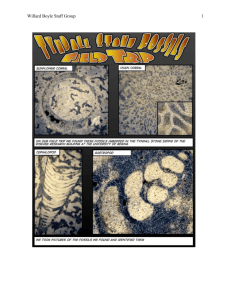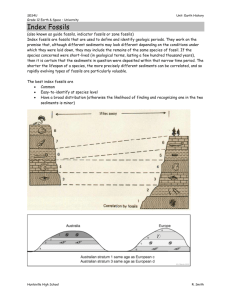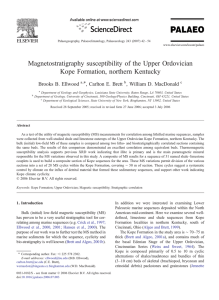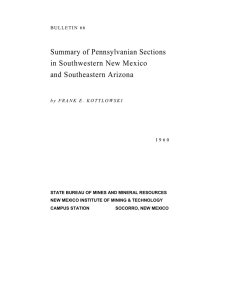Rock of Ages - eyesright.us
advertisement
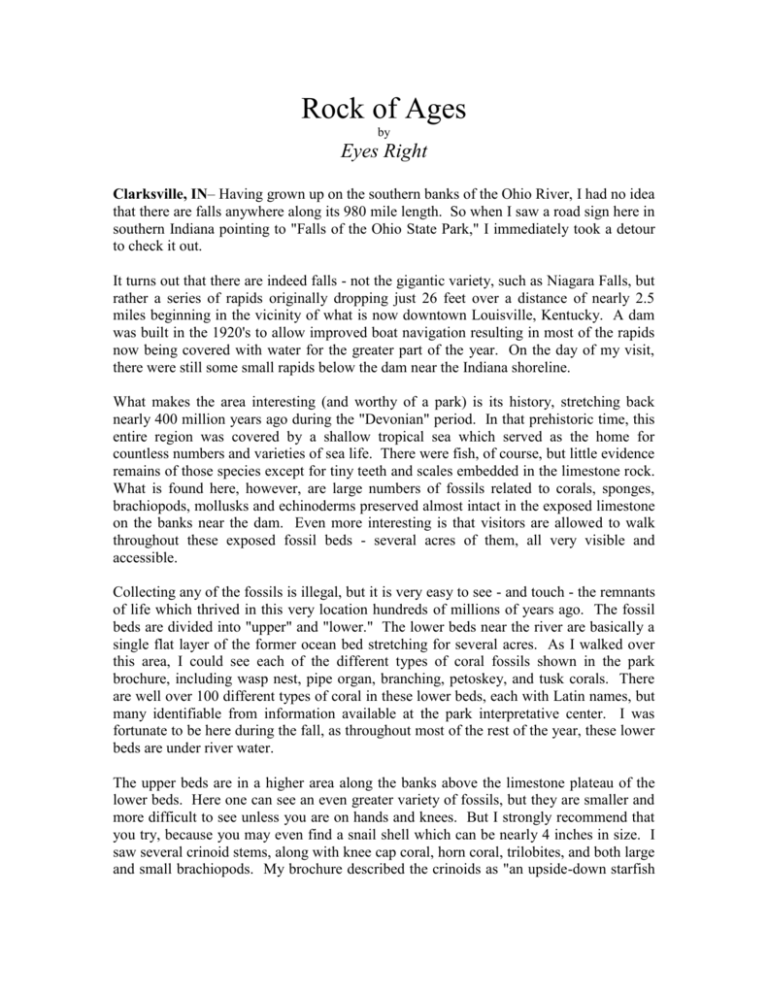
Rock of Ages by Eyes Right Clarksville, IN– Having grown up on the southern banks of the Ohio River, I had no idea that there are falls anywhere along its 980 mile length. So when I saw a road sign here in southern Indiana pointing to "Falls of the Ohio State Park," I immediately took a detour to check it out. It turns out that there are indeed falls - not the gigantic variety, such as Niagara Falls, but rather a series of rapids originally dropping just 26 feet over a distance of nearly 2.5 miles beginning in the vicinity of what is now downtown Louisville, Kentucky. A dam was built in the 1920's to allow improved boat navigation resulting in most of the rapids now being covered with water for the greater part of the year. On the day of my visit, there were still some small rapids below the dam near the Indiana shoreline. What makes the area interesting (and worthy of a park) is its history, stretching back nearly 400 million years ago during the "Devonian" period. In that prehistoric time, this entire region was covered by a shallow tropical sea which served as the home for countless numbers and varieties of sea life. There were fish, of course, but little evidence remains of those species except for tiny teeth and scales embedded in the limestone rock. What is found here, however, are large numbers of fossils related to corals, sponges, brachiopods, mollusks and echinoderms preserved almost intact in the exposed limestone on the banks near the dam. Even more interesting is that visitors are allowed to walk throughout these exposed fossil beds - several acres of them, all very visible and accessible. Collecting any of the fossils is illegal, but it is very easy to see - and touch - the remnants of life which thrived in this very location hundreds of millions of years ago. The fossil beds are divided into "upper" and "lower." The lower beds near the river are basically a single flat layer of the former ocean bed stretching for several acres. As I walked over this area, I could see each of the different types of coral fossils shown in the park brochure, including wasp nest, pipe organ, branching, petoskey, and tusk corals. There are well over 100 different types of coral in these lower beds, each with Latin names, but many identifiable from information available at the park interpretative center. I was fortunate to be here during the fall, as throughout most of the rest of the year, these lower beds are under river water. The upper beds are in a higher area along the banks above the limestone plateau of the lower beds. Here one can see an even greater variety of fossils, but they are smaller and more difficult to see unless you are on hands and knees. But I strongly recommend that you try, because you may even find a snail shell which can be nearly 4 inches in size. I saw several crinoid stems, along with knee cap coral, horn coral, trilobites, and both large and small brachiopods. My brochure described the crinoids as "an upside-down starfish on a stem." The trilobites were creatures which moved about the ancient sea floor sort of like crabs or lobsters do today. The limestone was a sedimentary rock formed by fossil skeletons being compressed by the weight of new sediment being added over millions of years. During the last "great" ice age, nearly 2.5 million years ago, everything here was buried under 2 miles of ice. It was not until our most recent ice age, just 21,000 years ago that the Ohio River was formed as those glaciers retreated. As the river flowed westward, the limestone has been eroded, exposing these magnificent fossils in the process. When the first humans in the area, about 13,000 years ago, came to these falls on the Ohio, they saw these same fossils much as we do today. Much more recently, Indians, and then French trappers, tread on this same ground. If you are anywhere near Louisville, cross the bridge and see for yourself. How often do you have an opportunity to see more fossils in their natural setting than anywhere else on Earth? I thought you might like to know. E-R





